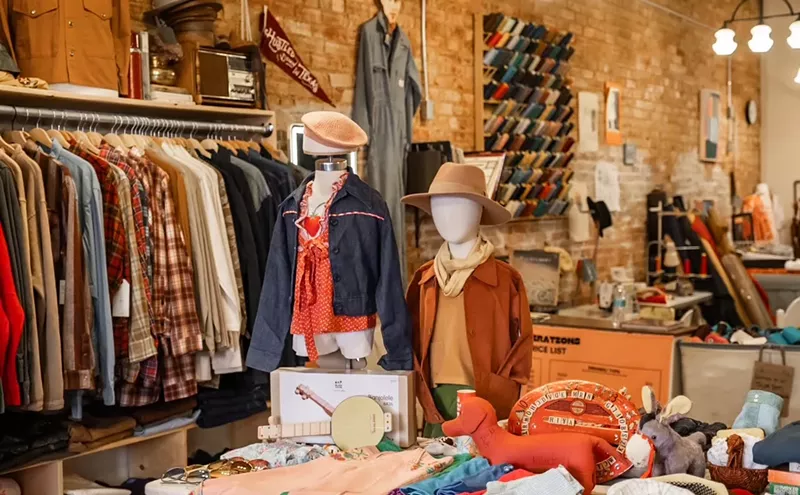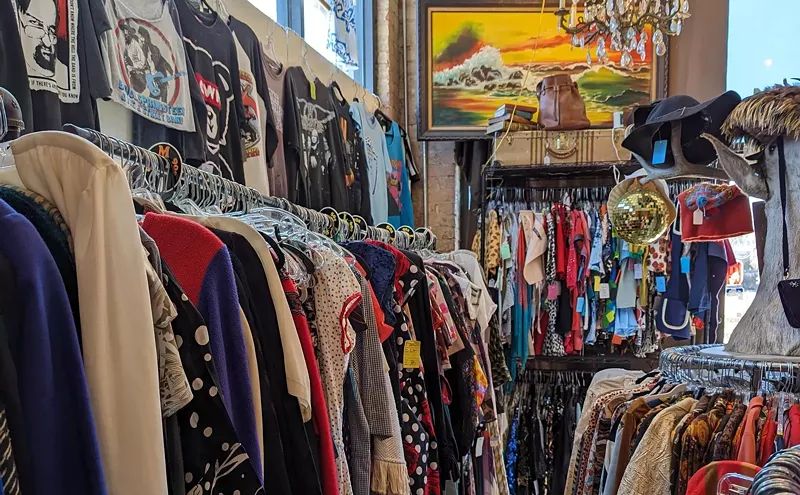Coming some 18 months after our government declared the recession of '01 deceased, the Kimbell's exhibition is the gloomiest sort of economic indicator. The Quest is a King Tut and Rameses the Great sequel, a cultural-artifacts display whose appearance at the Kimbell is perhaps best explained by the twin effects of dwindling museum receipts and the likely effect of stock market reversals on the Kimbell's endowment. Why else would a great small art museum stoop to hosting a cultural-artifacts show, a show that panders to the lowest common denominator, the public's desire to see displays of gold, coffins and funerary artifacts, a show that relies on the popular fascination with death, superstition and loopy religious beliefs, a show conducted on the level of a Biography- or History-channel documentary? A show that last stopped, appropriately enough, at the Boston Museum of Science?
Not to imply that The Quest lacks artistic content. There's plenty of symbolism in evidence at the Kimbell, beginning with the flies buzzing about in the chow line at the restaurant. "They must have come from across the street," joked the aging bottle blonde with big hair behind the counter, referring to the new Modern Art Museum of Fort Worth.
Au contraire; a stroll across Arch Adams Street revealed a far more youthful crowd, and even, where appropriate, some evidence of Botox and plastic surgery. At the Kimbell, meanwhile, death was everywhere, beginning with the aging and demographically less desirable audience pressing their noses against the glass of pharaonic wealth and privilege. The Quest for Immortality is an exhibition designed to make an audience feel good, one utterly unconcerned with any sort of art-world discourse.
This is not, necessarily, a bad thing; heaven knows that I'm no fan of prevailing art-world wisdom. But there are myriad interesting, legitimate platforms for examining art without resorting to the pseudo-populist, pseudo-scientific curio-cabinet approach adopted by The Quest. As if acknowledging this difficulty, the acousti-guide even employs Jeremy Irons to lend the enterprise a (very thin) veneer of snobbery and larn'in.
It's a shame, for there is a legitimate art exhibition lurking within The Quest. Wandering through the show, one sees a number of strange affinities between the work of anonymous ancient artisans and cutting-edge contemporary artists. The highlight of the Kimbell's show is even an installation piece: a reconstruction of the burial chamber of King Thutmose III, its walls ringed by hieroglyphs comprising the complete "text" of the Amduat, an Egyptian book of the dead. As Irons notes in his droll baritone, official Egyptian art was impersonal and highly stylized. Like much trendy 20th-century art, the utility of the object itself is disconnected from its salability, its monetary value; instead, its power lies in its function as amulets, as texts and as "signifiers."
The greatest feats, the monumental sculptures and architectural marvels, were even constructed through an early version of mass production. Though handcrafted, the artisans themselves were anonymous; Egyptian art of the "new kingdom" is as untouched by an individual artist's "style" as Jeff Koons' sculptures of Michael Jackson, produced by minions slaving in the studio.
Unlike much 20th-century art, however, Egyptian art utterly lacks any hint of rebellion. There is no notion of the artist as societal critic, as someone standing apart in rebellion. The objects in The Quest fulfill no Kantian vision of "taste," betray no notion of an aesthetic "sense" apart from their use as a tool of religion, or of morality, or of magic. Then, as now, art was employed as a tool of the ruling elite, as a system for delivering messages, as a tool of propaganda and of celebrity, as a means of inculcating the masses. But there was no notion of art as something enjoyed by a specialized, sophisticated audience.
There is a curious paradox in a show like The Quest. Although the objects are, in a limited sense, accessible--you can see, for example, that this is a bracelet, that is a stick figure--their interpretation requires extensive knowledge and learning. And so it is that a mass audience that would never stand for an hour-and-a-half lecture on the body of knowledge needed to interpret complex codes of contemporary art will nevertheless queue to listen to an actor hold forth on the finer points of Egyptian cosmology and scarab-beetle symbolism. All in the service of values promoted by the political and cultural elite: the myth of the social import of art, not to mention the import of cultural exchange with a liberal, secular Arab state.
Maybe it is art. Anybody up for Persian jewels at the Frick?












